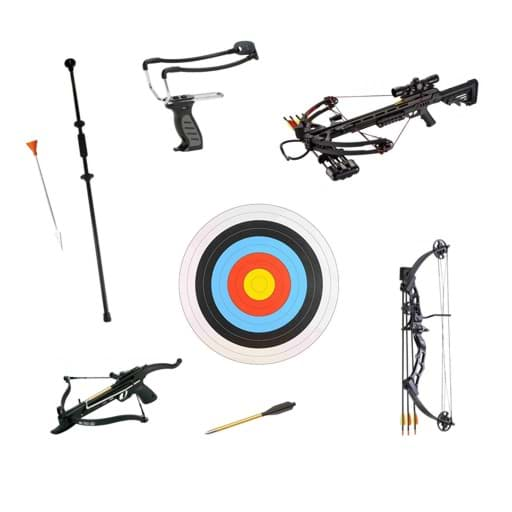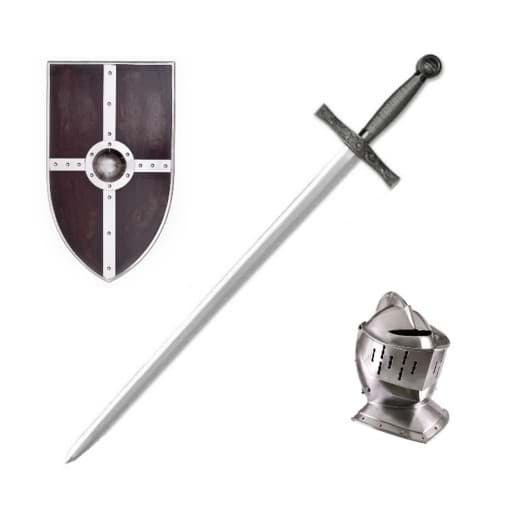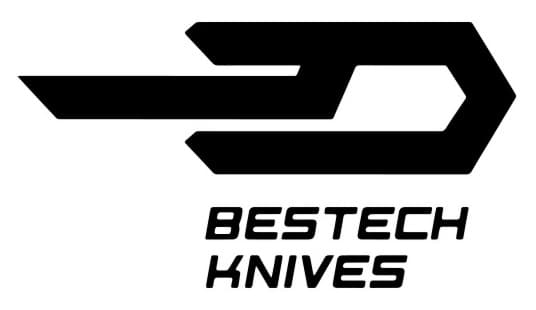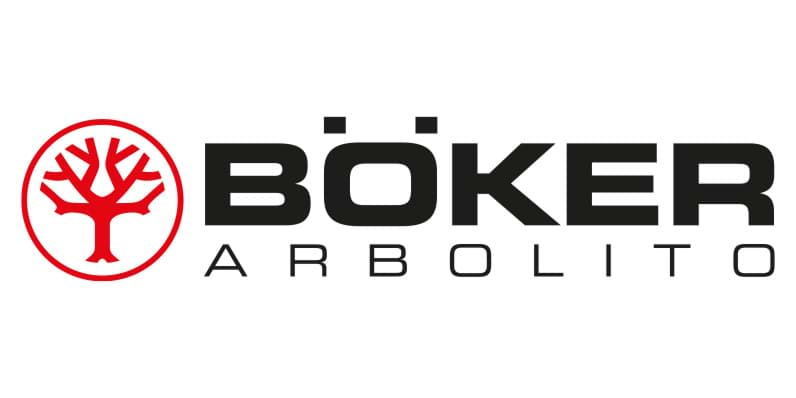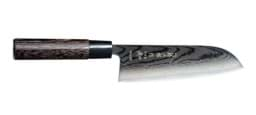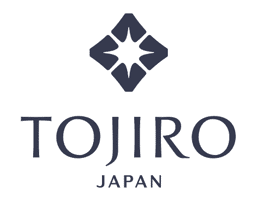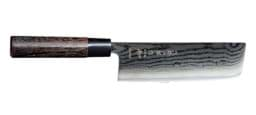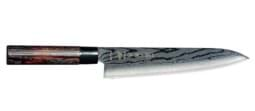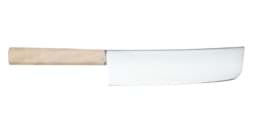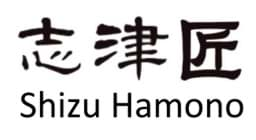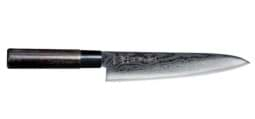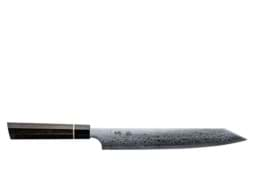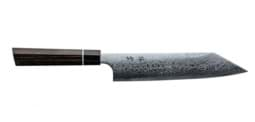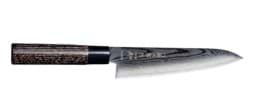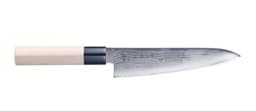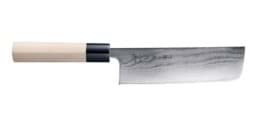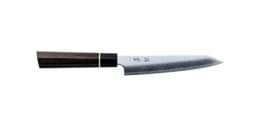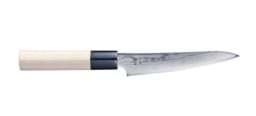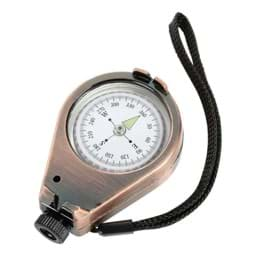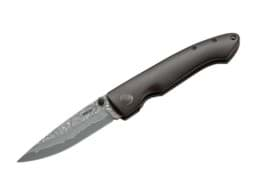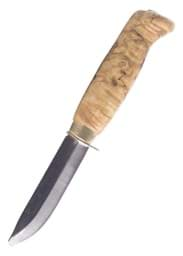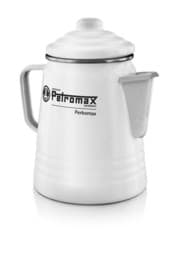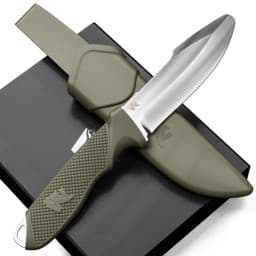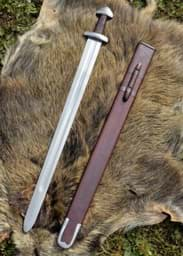Japanese knives are among the best kitchen knives in the world. The high-quality cutting tools impress with exceptional sharpness and edge retention, but they are also a visual delight. While top chefs have long sworn by Japanese chef's knives, their unique characteristics are now increasingly appreciated by amateur cooks as well.
Whether Santoku, Nakiri, or Gyuto: Meister Messer offers you a wide selection of Japanese chef's knives, which includes both all-purpose knives and designs specifically tailored for cutting meat or vegetables. The following buying guide will help you find the right model.
What makes Japanese chef's knives so special?
Japanese craftsmanship represents a perfected art over many centuries. The result is chef's knives with razor-sharp blades that allow for very precise and particularly gentle food preparation. The extreme sharpness is due to both the materials used and the production process.
Even today, there are many small workshops in the land of the rising sun where traditional Japanese knives are crafted by master hands. However, in the market, you can also find numerous industrially manufactured Japanese chef's knives. Yet, even these models typically undergo numerous manual work steps.
In addition, when designing and manufacturing Japanese knives, fewer compromises are often made. While European manufacturers usually also consider variables such as dishwasher suitability, corrosion resistance, and break resistance, Japanese producers generally focus primarily on sharpness, cutting performance, and easy handling.
What materials are Japanese chef's knives made of?
The blades of Japanese chef's knives are made of a very hard and tough steel. Only these material properties make it possible at all to sharpen the cutting tools so extremely sharp. The blade steel is a key reason why Japanese chef's knives perform so well in tests. The blade is typically made of one of the following types of steel:
- Damascus steel: The famous Damascus steel is composed of a hard, carbon-rich steel and a soft, carbon-poor steel. In the manufacturing process, the different types of steel are repeatedly folded over each other, creating a multi-layered material. Japanese knives made of Damascus are extremely sharp, very durable, and sometimes even rust-resistant. In addition, kitchen knives made of Damascus steel have a unique surface finish.
- Carbon steel: Blades made of carbon steel also impress with outstanding sharpness and edge retention. This can be attributed to the high carbon content, which can be as high as two percent. While Damascus knives were long considered the best Japanese knives, high-quality carbon steel kitchen knives now rival Damascus steel models. However, carbon steel blades are not always rust-resistant.
- Stainless Steel: Japanese chef's knives made of stainless steel offer a good balance between sharpness, edge retention, and corrosion resistance. Steel types like VG-10 and AUS-8 are rust-resistant, as they contain a higher percentage of chromium than models made of carbon steel. Compared to these, the blade hardness is slightly lower - but still higher than that of European chef's knives.
Did you know? Hand-forged Japanese chef's knives are often made of Aogami or Shirogami. These are blue and white paper steels, respectively. Extremely hard, sharp, and very durable blades can be made from both types of steel. If you want to buy such Japanese knives, you will need to invest a considerable amount.
Types of Japanese Chef's Knives: The Right Knife for Every Task
Japanese chef's knives come in different designs. Which type of knife is suitable for you depends on the intended use. The tasks for which the most famous types of Japanese knives are designed are illustrated below.
Santoku knife: The versatile all-rounder
The Santoku knife is a true all-rounder, suitable for cutting meat, fish, and vegetables. The Santoku is often considered the Japanese counterpart to the classic chef's knife, but has a slightly shorter blade than the European version. Typically, the blade length of Santoku knives ranges between 15 and 20 centimeters.
The Japanese chef's knives are equipped with a flat edge and a rounded tip. These design features facilitate delicate cuts and precise work. The blade is ideal, for example, for slicing thin slices and finely dicing ingredients.
The name Santoku means "three virtues" or "three uses", emphasizing the versatility of the knife. Due to its balance between functionality and aesthetics, the Santoku knife is a favorite among many professional and hobby chefs.
Nakiri: The master for vegetables
A Nakiri is a Japanese vegetable knife with a straight edge and a wide blade. Due to the straight blade, the vegetables can be processed with precise, clean cuts. The wide blade also provides good guidance and control when cutting, allowing for effortless processing of larger vegetables.
Another feature of the Nakiri knife is its double-edged blade, making it suitable for both right and left-handed individuals. This sets it apart from traditional Japanese knives, which are often single-edged. Its lightweight construction also makes it a handy and user-friendly kitchen tool. By the way, single-edged vegetable knives are called Usuba.
Nakiri knives are not only functional, but also aesthetically pleasing and an eye-catcher in any kitchen. Many models feature artistic designs. Nakiri are considered the perfect choice for chefs who value precision and elegance in vegetable preparation.
Gyuto: An essential tool for meat and fish lovers
A Gyuto is used to work with meat and fish. The cutting tools are usually slightly longer than Santoku knives and have a tapered blade that facilitates precise cutting and filleting. Thanks to their round blade shape, the knives are also suitable for rocking cuts, so they can also be used for chopping herbs.
The length and weight of the Gyuto knife are carefully balanced to ensure optimal handling. Therefore, the knives are also suitable for longer cutting sessions that require precision. The blade is usually made of high-quality steel, ensuring long-lasting sharpness and durability.
Ajikiri: A versatile tool for delicate cuts
The Ajikiri is a compact utility knife that is ideal for delicate cutting tasks requiring a high level of control and precision. With this knife, you can, for example, cut vegetables and herbs, as well as fillet small fish.
At the same time, the Ajikiri is considered an excellent knife for preparing sushi and sashimi. Its sharp blade allows for cutting fish and other ingredients with minimal effort and maximum precision. This is particularly important for preserving the texture and appearance of the ingredients, which is highly valued.
Sashimi: For delicate cuts
The Sashimi was specially designed for filleting fish and meat. The Japanese chef's knives allow you to cut wafer-thin, which is why they are ideal for preparing sushi.
The blade of the Sashimi knife is long, narrow, and extremely sharp. This blade shape allows for cutting fish and meat in a single, smooth stroke without destroying the fiber structure. This is crucial for preparing Sashimi, as the texture, freshness, and visual appearance of the fish are highly valued in Japanese cuisine.
The handling of the kitchen tool requires skill and practice, as the cutting technique significantly contributes to the quality of the end product. Due to the long blade, you can work with little pressure, preserving the delicacy of the fish or meat and resulting in a clean, aesthetic cut.
Care tips for Japanese chef's knives
Japanese chef's knives are known for their exceptional sharpness and quality, but they are slightly more delicate than European kitchen knives. To maintain the functionality of the knives and ensure their longevity, proper care is essential. The following tips will help you keep your knives in the best possible condition:
- Cleaning: Japanese kitchen knives should not be put in the dishwasher, as aggressive detergents and salts can harm the knives. Therefore, you should always clean Japanese knives by hand. For this purpose, it is best to use warm water and a mild detergent. After cleaning, you should immediately dry the knife to prevent rust formation. Lightly oiling the blade can also have a corrosion-protective effect.
- Regular Sharpening: Keep the blade of your knife sharp by regularly sharpening it. For this purpose, use a water stone suitable for Japanese knives. Grits between 800 and 1000 are recommended for sharpening. For blade polishing, use grits starting from 3000. Sharpening Japanese knives requires some practice. However, the procedure is worth it to maintain cutting performance.
- Avoid hard cutting boards: Hard surfaces like glass or stone damage the fine blade of Japanese chef's knives in the long run. Therefore, you should use a wooden or plastic cutting board as a cutting surface. Also, avoid cutting bones or processing frozen foods with Japanese knives.
- Storage: Store your knives in a knife block, a knife bag, or on a magnetic strip. Direct contact with other kitchen utensils can cause scratches or damage to the blade.
By following these care tips, you ensure that your Japanese kitchen knives maintain their quality and sharpness over the years and always deliver the best results.
Buy Japanese kitchen knives cheaply at Meister Messer
At Meister Messer Online Shop, you can get high-quality Japanese chef's knives made from premium materials and superbly crafted. Our range includes knives from various renowned Japanese forges. For example, we stock models from Tojiro, Shizu Hamono, and Kanetsugu. Explore the fascinating world of Japanese chef's knives at Meister Messer now and find the perfect tool for unparalleled cutting results today.

